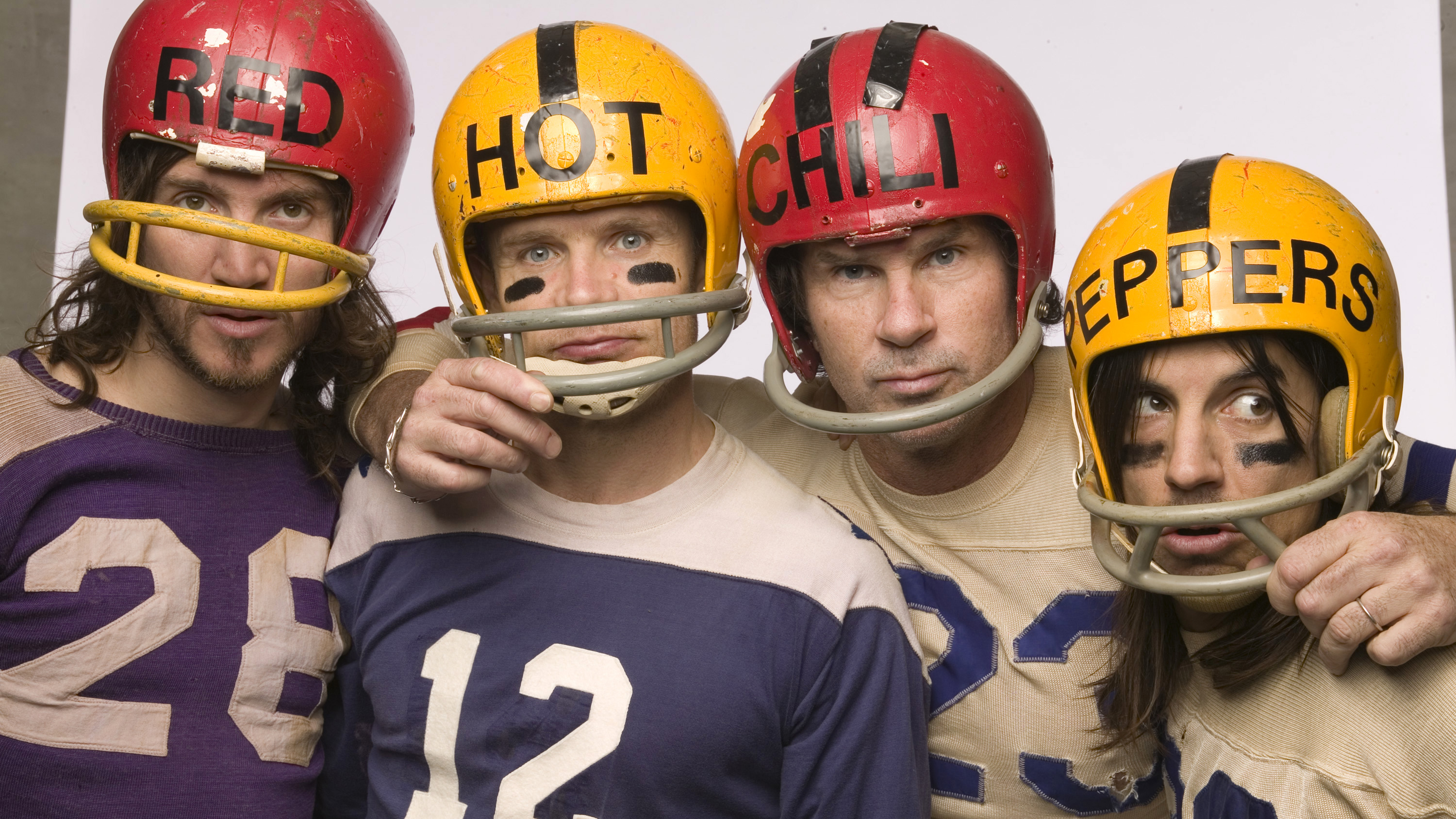5 great songs with questionable mixes: "The more you look at it like some tech-boy producer, the less you get it"
From Burial to the Red Hot Chili Peppers, we round up five unconventional approaches to mixing that resonated with listeners

In any creative discipline, everyone has their own taste. What makes a piece of music good or bad is entirely subjective: one man's trash is another man's treasure, as the old saying goes. This doesn't only apply to the style or vibe of a piece of music, though, but also to the way a song is produced, mixed and mastered.
Without getting too philosophical, this begs the question: Is there really such thing as a "bad" mix? We’re not entirely sure, although there are, of course, some generally accepted mixing norms that are widely followed to ensure that music is pleasing to the majority of listeners.
For example, creating a good tonal balance prevents particular musical elements or frequency ranges from stealing the limelight. On the other side of the coin, creating a sense of contrast and definition in the mixing stage can help to distinguish each element within a mix. This could relate to frequency content, volume, timbre, panning or other sonic characteristics. For vocal-oriented genres such as pop and hip-hop, the vocal should be transparent and intelligible.
It's worth remembering, though, that these are mere conventions and by no means constitute a set of hard and fast rules. With that in mind, let’s take a look at some unconventional mixes that stray from those accepted norms in one way or another, often arriving at something unique - and occasionally brilliant - in the process.
1. Burial - Archangel
First up is this track from Burial’s seminal album, Untrue. Frankly, all 13 tracks from the album could make it onto this list, but Archangel stands out as a particularly unconventional mix. It’s fair to say that when it comes to music production practices, Burial is someone who has probably never heard of the rule book, let alone followed it.
There are a number of production decisions that come together to define Burial’s signature sound. He’s famed for sampling sound effects from the game Metal Gear Solid to create the skittering off-kilter hi-hats that are strewn throughout his productions. He’s also said to have created the album in two weeks using a primitive audio editor called Sound Forge.
Additionally, the vocals used throughout the album are sourced from everything from Top 10 pop hits to YouTube covers from unknown artists. His unique vocal style is the result of ripping often badly-recorded vocals and then aggressively repitching them.
Want all the hottest music and gear news, reviews, deals, features and more, direct to your inbox? Sign up here.

If it ain't broke... 5 artists making music with old-school technology
This is true of the vocals in Archangel; the track features a combination of extremely wide and narrow vocals, with the narrow vocals fighting for space with the string pad. Incidentally, the string pad is sampled from the intro to a Metal Gear Solid game, but lacks the width and clarity that you might expect from the main melodic element of a track.
The vocals are one of the driest elements in the mix, with Burial opting to apply reverb to the drums, kick and bass instead. His signature layer of vinyl crackle features sporadically throughout the album, but at a volume that could be perceived as distracting.
In a 2006 interview with Martin Clark, Burial explains the crackle sound is to hide the fact he couldn’t get his drums to sound like garage producer El-B’s. “The thing about garage is: the more you look at it like some tech-boy producer, the less you get it.”
On paper, Archangel’s mix just shouldn’t work. In reality, it works remarkably well, summoning a powerful sense of nostalgia and melancholy. Despite Burial’s arguably questionable approach to production and mixing, Untrue remains one of the most influential albums in contemporary electronic music and was even nominated for a Mercury Music Prize in 2008.
2. Tyler the Creator - BOYFRIEND
Another album that has been mixed to unconventional standards is Tyler the Creator’s 2019 album Igor. Once again, the entire album would qualify for a position on this list, but some tracks on the album are more extreme than others when it comes to their unusual production and mix aesthetic.
The fourth track from the album’s physical release, BOYFRIEND, is the most prominent example. The introduction to BOYFRIEND is relatively inoffensive - it’s not until additional elements are introduced later in the track that you begin to realise how out of balance the mix sounds.
This is a common theme throughout Igor, as is the extensive processing that often renders the lead vocal distorted and at times unintelligible. The bass frequently takes centre stage while the drums and lead vocal are tucked in behind.
Tyler the Creator’s mastering engineer Mike Rozzi says that Tyler told him "I want this to be gross"
Tyler the Creator is known to have produced the entire album, and though he passed mixing and mastering duties on to dedicated engineers, he instructed them to make the album sound the way it does. In an interview with Mix with the Masters, Tyler the Creator’s mastering engineer Mike Rozzi says that Tyler told him “I want this to be gross.”
The crunchy, distorted finish of the entire album gives it a lo-fi feel, and the juxtaposition between the emotive melodies and highly textured mix has been widely praised by listeners and critics. Regardless of - or perhaps because of - the mix aesthetic, Igor earned Tyler widespread acclaim and won a Grammy in 2019 for Best Rap Album.
3. Jai Paul - Jasmine (Demo)
Tyler the Creator isn’t the only popular artist taking an unorthodox approach to mixing and production. Jai Paul is renowned for both his out-there aesthetic and unique vocal delivery, and the vocals on Jasmine are no exception.

Much like the Tyler the Creator examples mentioned above, the focal point in Jasmine (Demo) is the bass while the vocals are mixed extremely far back in the mix. This is particularly true in the verses, while the vocals are allowed to shine through a little more during choruses. Additionally, there seems to be an extreme chorus effect on the vocal that almost verges into phasing territory.
In the intro and outro, the bass moves around the stereo field, which is generally a mixing no-no for mono-compatibility reasons. As the track progresses, the additional notes and distortion make the bass increasingly hectic. The swelling lead sound that is introduced later on in the track is also heavily distorted, which adds to the sense of chaos.
It’s possible that Jai Paul himself came to observe these mixing quirks, as a second version entitled Jasmine (Edit) was released in 2020 to coincide with a vinyl release. In this version, the vocal is noticeably more present while the other unusual mixing characteristics are attenuated, or not present at all.
Now would be a good time to remind ourselves again that unconventionality is often a mix's strong point, rather than its downfall. In an interview with Pitchfork, Canadian producer Caribou echoed this sentiment, praising Jai Paul’s distinctive sound: “I want to aspire to make music that’s exciting and has unexpected things happen, but that is truly unexpected and amazing. It lives in its own world.”
4. The Avalanches - Frankie Sinatra
As well as having a rather bizarre but entertaining music video, Frankie Sinatra by The Avalanches is another popular track that showcases an atypical mix. Once again, the vocals during the verses - especially Danny Brown's contributions - are very obviously set back while the bouncy brass elements take precedence at the forefront of the mix.
This is particularly unusual for rap vocals, which are the focal point of any hip-hop track; a mixing engineer's job is to ensure that the lyrics are loud and clear enough to be comprehensible to the listener. Additionally, the sporadic snare fills seem to be laid on top of the other drum elements as opposed to being mixed together. The result is a jarring snare scare as you listen through the track.
5. Red Hot Chili Peppers - Californication
The final example on this list isn’t an unconventional mix as such, but it's still worthy of a mention. That example comes courtesy of Red Hot Chilli Peppers and their 1999 album Californication. Sadly, the album fell victim to the infamous loudness wars, and is still widely cited as one of the worst examples of mastering in modern music.
We’ve embedded the remastered version above, as the original master isn't available on YouTube. The extent of the compression and distortion was so severe in the original master that listeners went to great lengths to get the album remastered: one even started a petition. This not only evidences how bad the album was sonically, but how well the musical content was received too - there are no petitions started for mediocre albums.
The petitioners' dreams were answered in 2012 when the album was remastered for vinyl. There was a further remaster in 2014 which was intended for streaming services, although audio buffs claim there is still some over-compression and even clipping present in the most recent version.


Jake Gill is a journalist, content writer and music producer based in Bristol, UK. Having studied marketing as well as music production, he's gone on to write for some of the industry's leading software developers, instrument manufacturers and publications. Alongside his writing work, he produces and DJs all manner of electronic music under his Yanari alias.




![Red Hot Chili Peppers - Californication (Official Music Video) [HD UPGRADE] - YouTube](https://img.youtube.com/vi/YlUKcNNmywk/maxresdefault.jpg)

